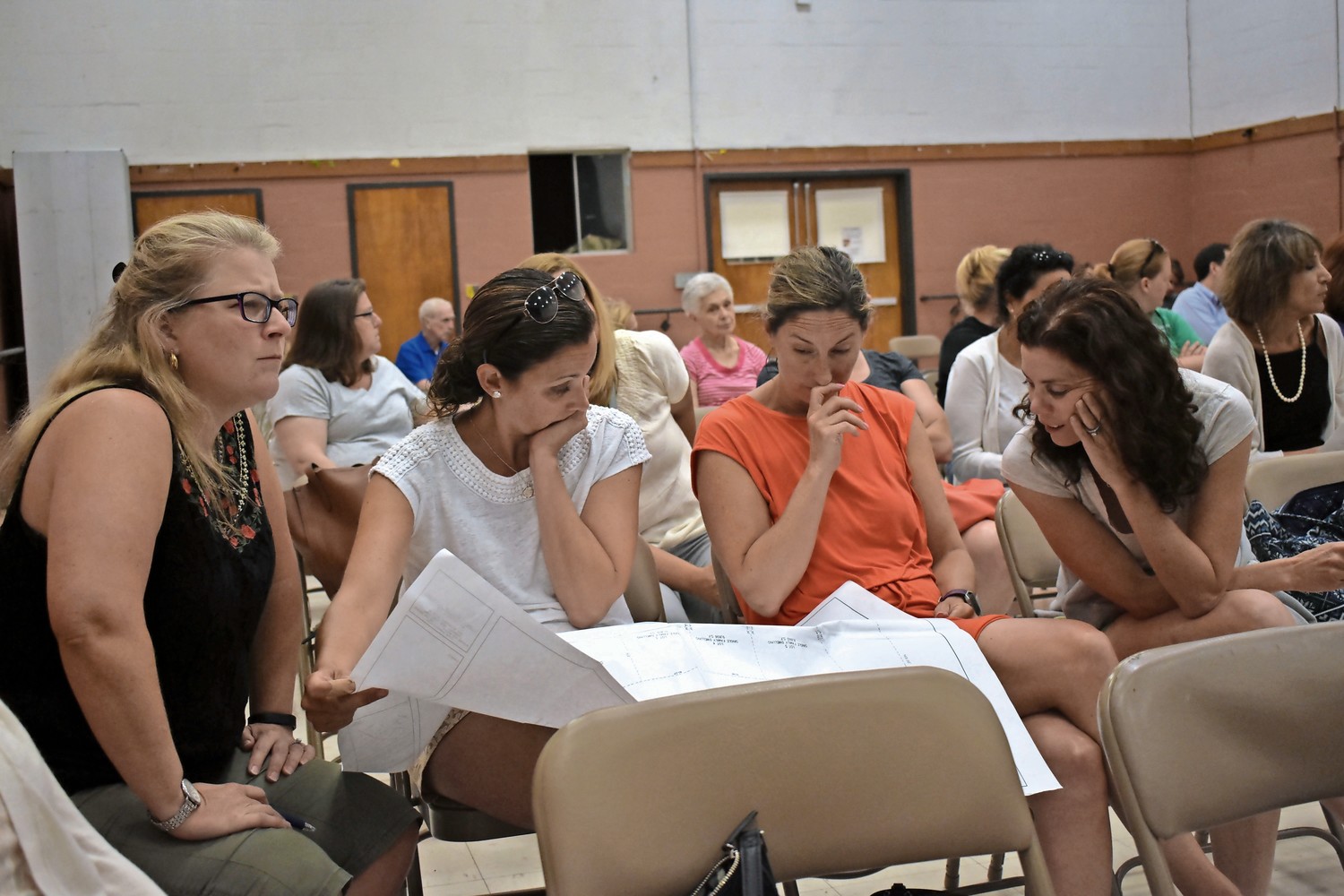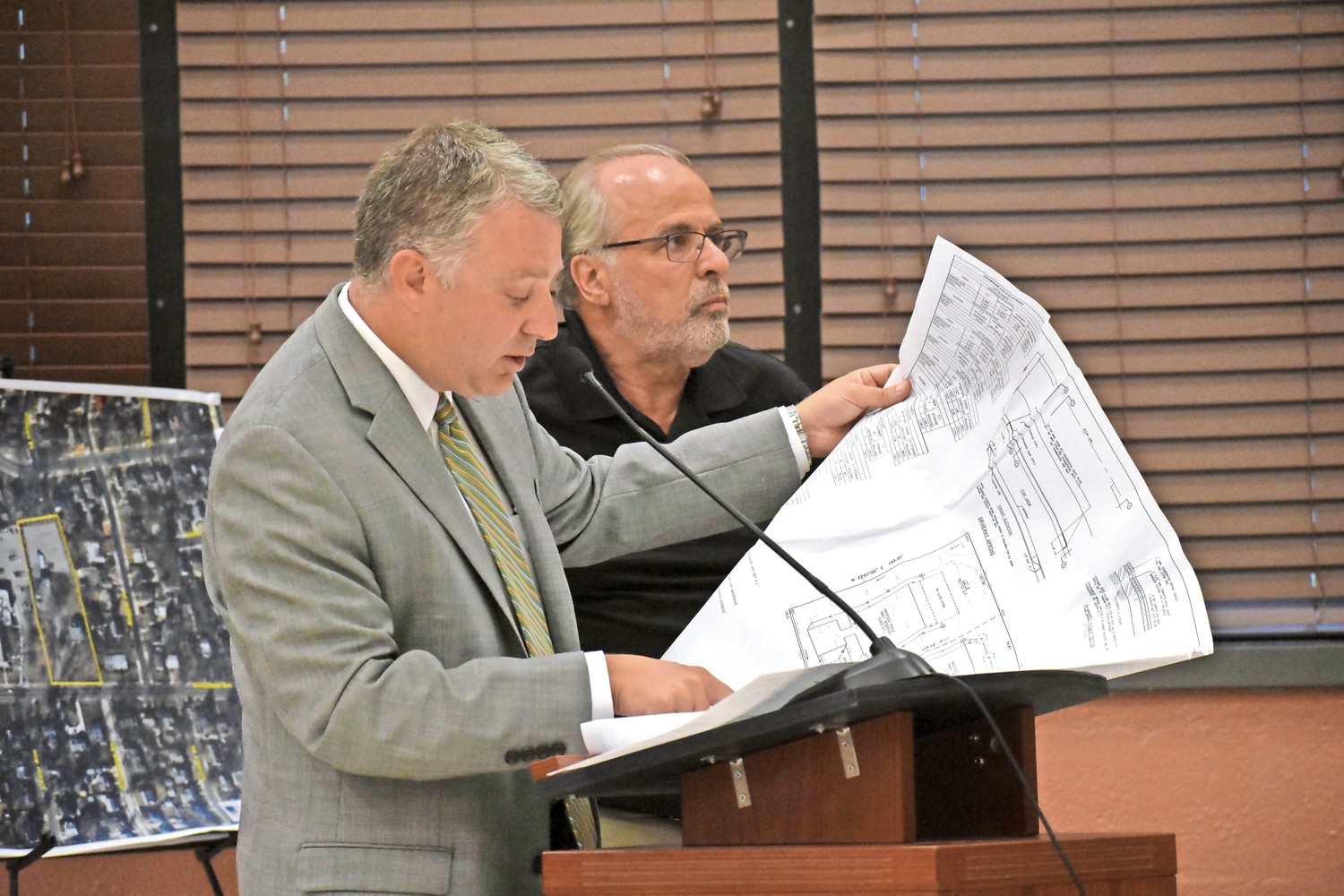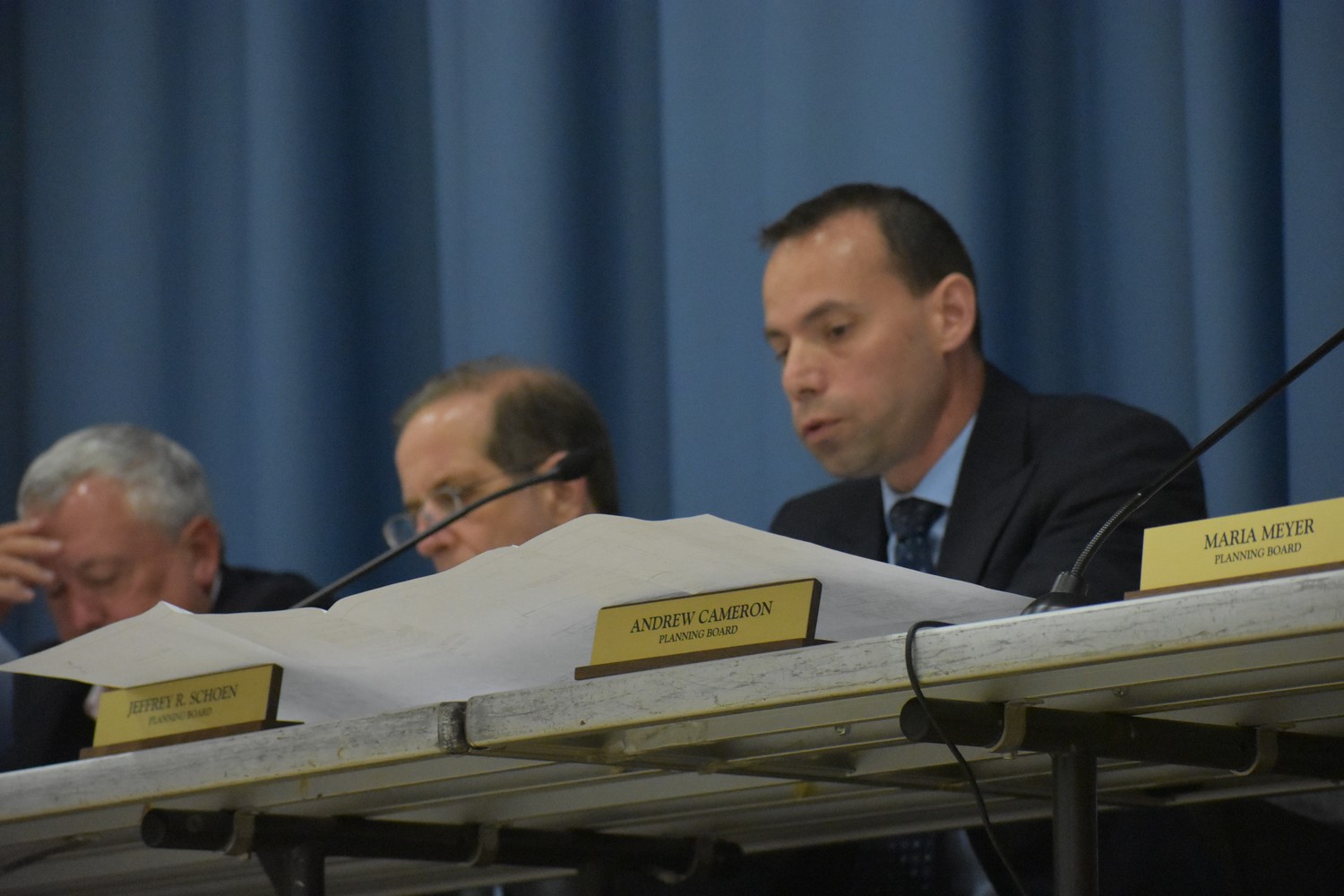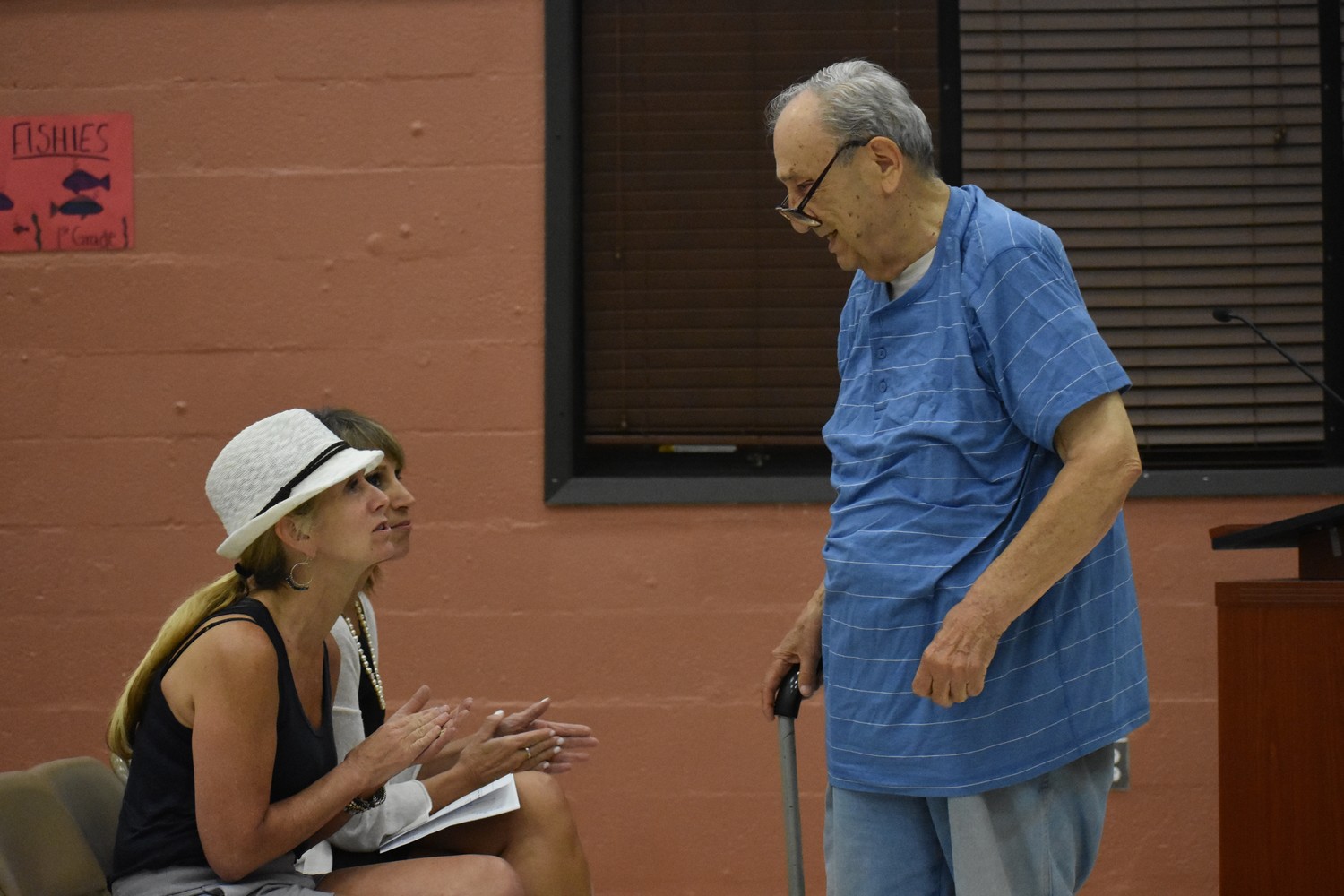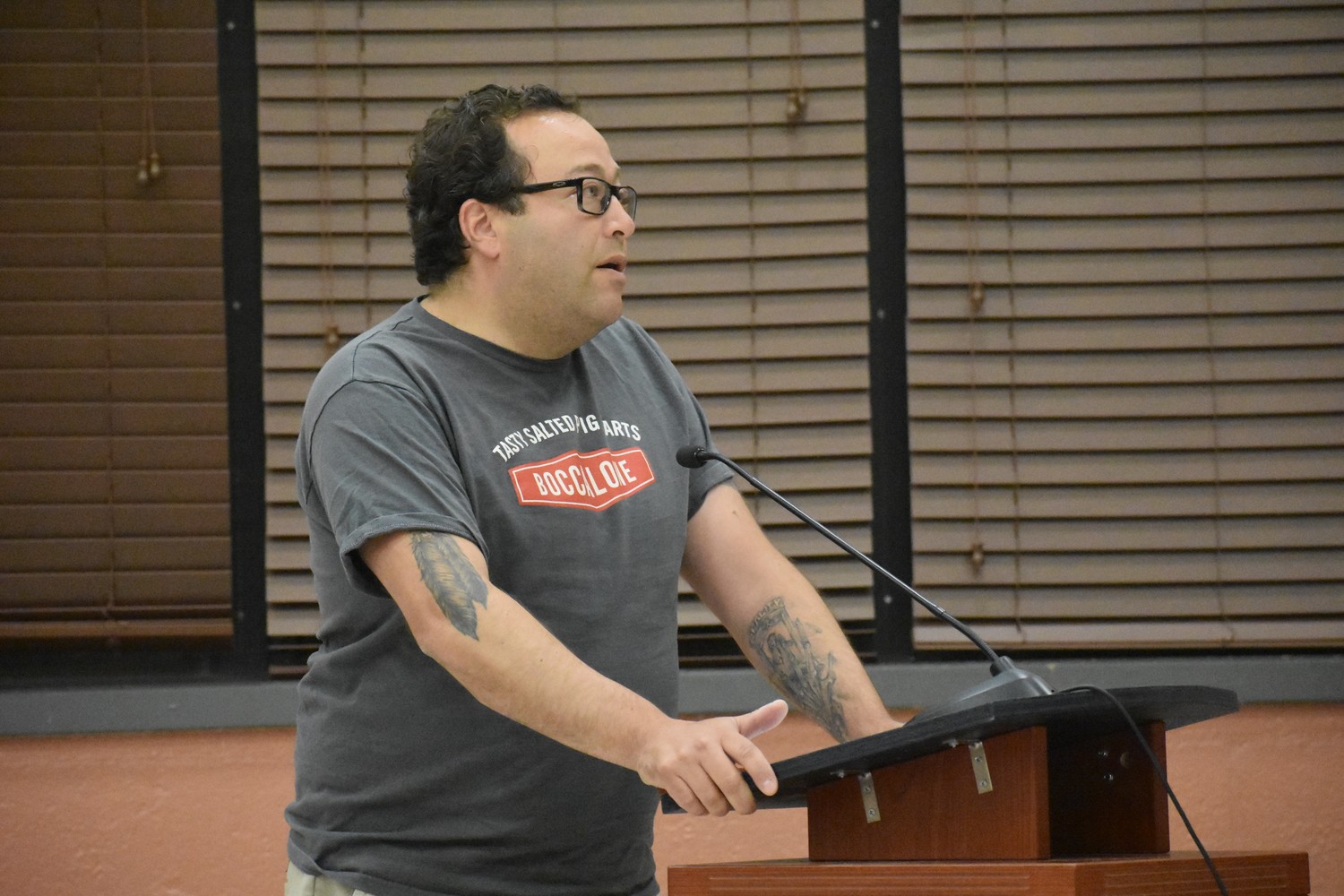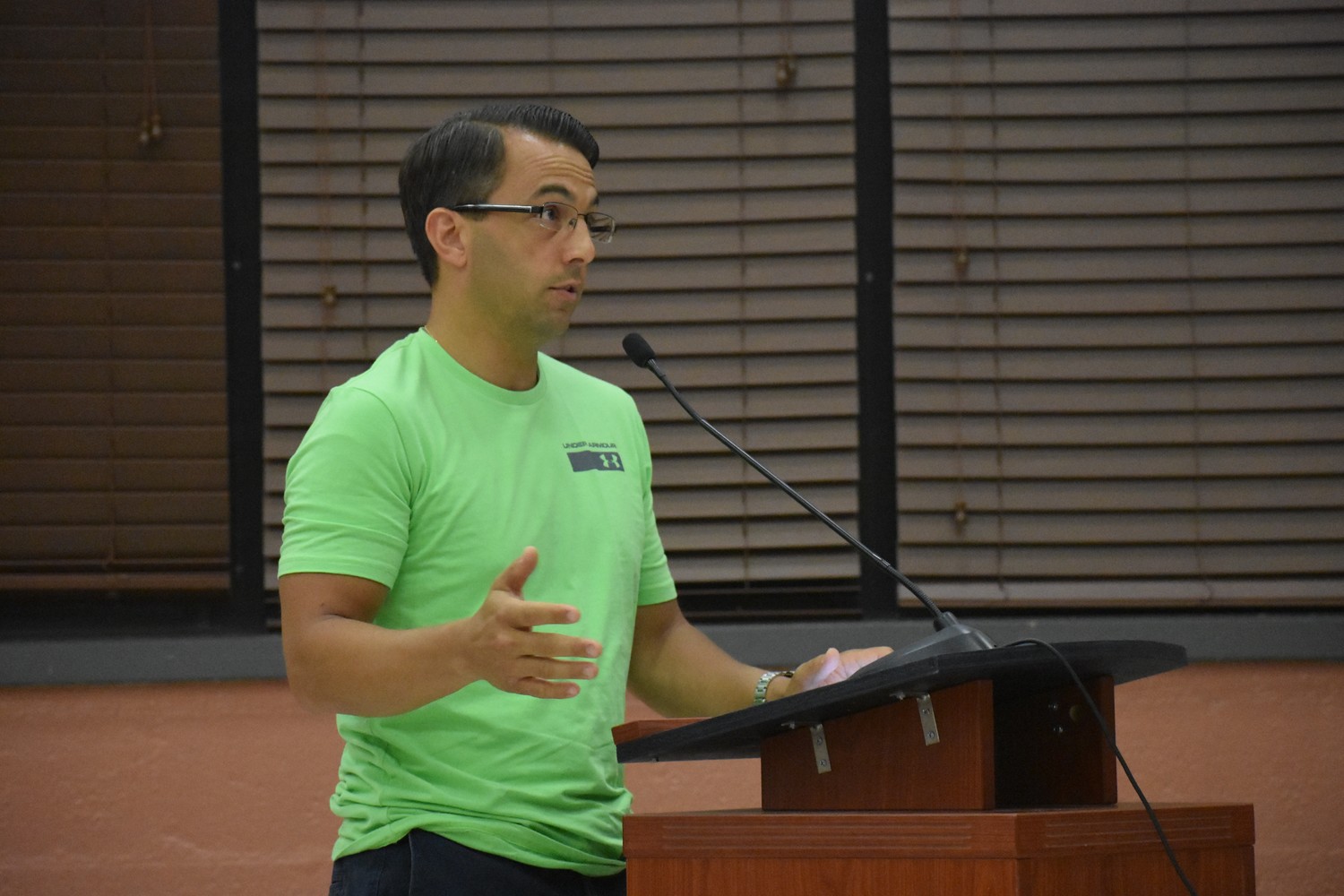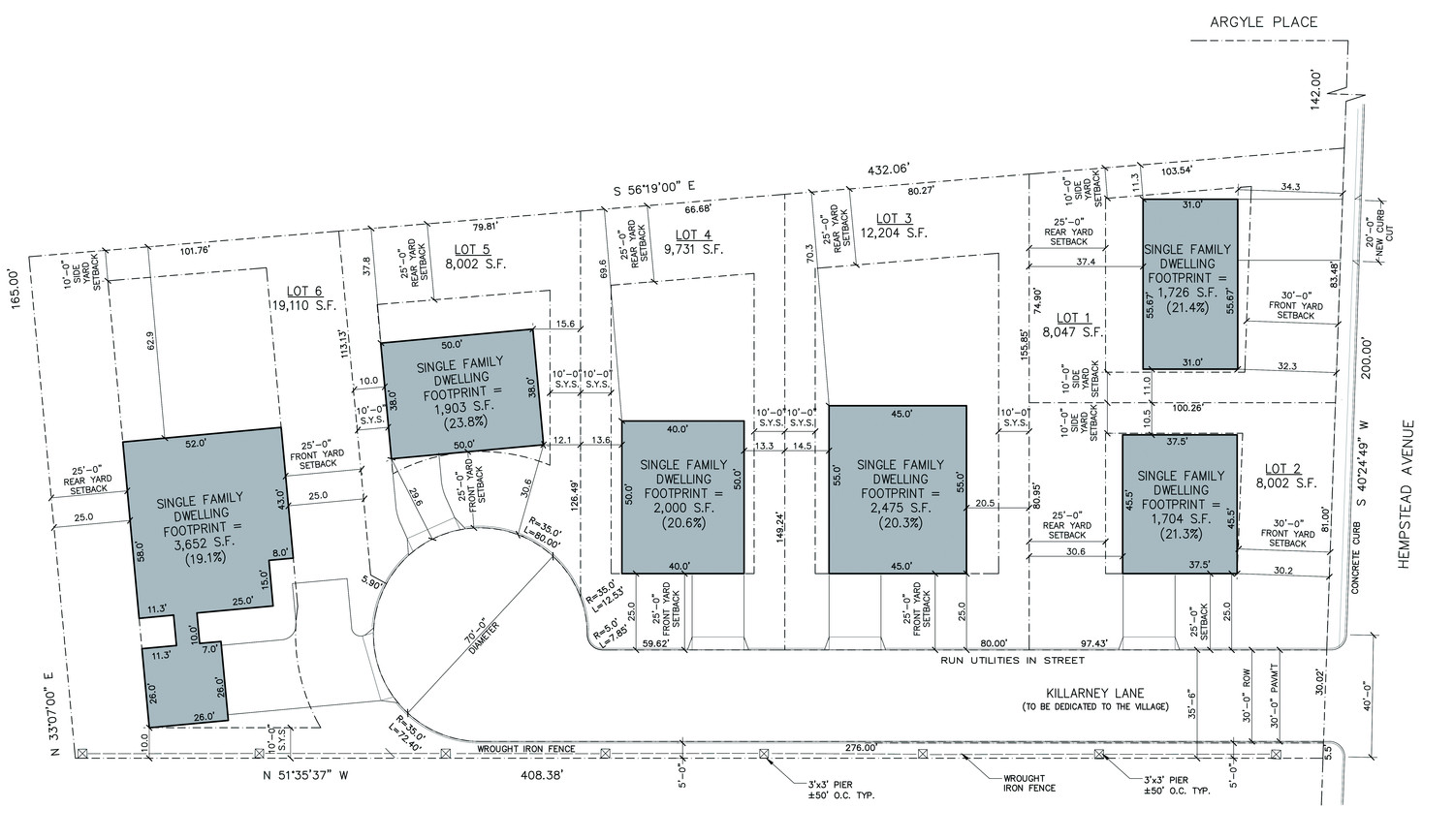Rockville Centre Planning Board begins hearing Hempstead Avenue subdivision case
Residents speak in opposition of six-home development at opening meeting
About a dozen Rockville Centre residents sounded off to the village’s Planning Board on July 10 about a proposed subdivision on Hempstead Avenue that many claimed would pave the way for future developers to change the character of the village.
Various plans by the property owners, Jim and Brett O’Reilly, to subdivide the 1.75-acre parcel of land and demolish the 19th-century home on the property — formerly the St. Mark’s United Methodist Church’s parsonage — have been opposed by some residents for more than two years.
The most recent plan to subdivide the plot into six single-family homes calls for a new street, to be called Killarney Lane, to be built perpendicular to Hempstead Avenue to allow access to the homes planned for the back of the property.
The O’Reillys were denied a variance by the village Board of Appeals last year when they sought to build a four-home subdivision on the site because the rear two homes would not have a minimum of 80 feet of frontage on a public road that village law requires. The village’s Building Department rejected the O’Reillys’ six-home proposal in March, determining that until Killarney Lane was accepted by the village board for dedication, it would be a private road.
But the Board of Appeals unanimously voted to allow the most recent plan to move forward to the Planning Board in April. Christian Browne, the attorney representing the O’Reillys, repeated at last week’s meeting that despite “the somewhat esoteric legal debate” between what makes a road public, Killarney Lane would be accessible to all and function as a public roadway.
“This road does not exist,” Raymond Street resident Grainne MacAneney said. “… The public road is Hempstead Avenue. That means there’s room for two houses.” She submitted to the board a petition opposing the subdivision, with 630 signatures.
John Toscano, of Carman-Dunne P.C., the engineering consulting firm working with the O’Reillys, said that about 95 percent of the engineering has been planned and submitted for approval, noting the logistics of the drainage, grading, sanitary system, water supply and street lighting. In response to concerns voiced by residents, he said that the development would greatly improve drainage at the site and cause minimal interruptions to other residents during an estimated two-year building period.
Jeffrey Schoen, acting as chairman of the Planning Board — Chairwoman Donna Joyce recused herself — asked Toscano and Browne why there were no sidewalks planned along Killarney Lane. Browne said they could be added if needed. “We’ll work with the board to the extent that there are reasonable requests for additions or alterations,” he said after the meeting.
Some of the several dozen people in attendance also raised concerns about destroying the site’s “historic” home, the additional traffic and congestion likely to be caused by more development, loss of property values and diminishing green space in the village. Some called for a moratorium on future subdivision plans until the village creates a “master plan” that includes resident opinions.
The village imposed a six-month building moratorium last July that affected “… any proposed use or development of any property for a private road, or of any property, building or structure which does not provide at least the required minimum frontage on a public road.” Nassau County Supreme Court Judge John Galasso nullified the moratorium in October, ruling that there was no evidence “to support a comprehensive review indicative of a certain land use or development that requires redressing.”
In terms of a master plan, village spokeswoman Julie Scully said that Mayor Francis Murray and the board of trustees consider the village code to be a plan of sorts as it continues to evolve.
“I know the time, energy, effort and money that this developer must have put in to get to this point, so I’m sure that he’s not taking this lightly,” Chris Manteria, a lifelong Rockville Centre resident and real estate agent, told the board. “The problem is it’s not about one development. It’s about another development, and another development.”
Some residents said that continuing development has the village looking less like Garden City and more like Queens. “Where does this urban creep stop?” Manteria added. “… I truly believe that what decision this board makes will affect how the remainder of development goes in this village.”
Browne told the Herald after the meeting that although residents’ concerns about future development and a master plan may be reasonable, they do not apply to this case. He noted that boards often draw distinctions between different cases because no two are the same, and they are not bound by previous decisions.
“There is really no such thing as setting a precedent in the planning context,” Browne said, “because planning is driven by environmental and engineering and logistical concerns.”
Steven Leventhal, a Roslyn-based lawyer serving as counsel to the Planning Board for the case, hinted at the possibility of a lengthy public process before the board would come to a decision on the subdivision.

